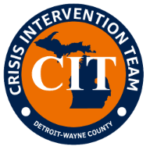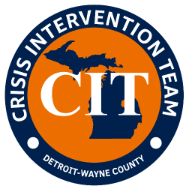Crisis Intervention Teams (CIT) represent a progressive and collaborative approach to managing individuals experiencing mental health crises, particularly when such incidents intersect with the criminal justice system. In the United States, CIT programs have emerged as a vital bridge between law enforcement, mental health professionals, community leaders, and healthcare providers, aiming to improve responses to mental health crises, enhance community safety, and reduce the need for involvement with the criminal justice system for individuals with mental health issues. This essay explores the development, implementation, challenges, and successes of Crisis Intervention Teams in the USA, offering a comprehensive overview of their role within broader efforts to address mental health crises.
Development and Purpose
The CIT model was first developed in Memphis, Tennessee, in 1988, following a tragic incident where a young man experiencing a mental health crisis was killed by police. This incident highlighted the urgent need for a more effective and compassionate approach to handling such situations, leading to the creation of the first CIT program. The primary goal of CIT is to provide law enforcement officers with the training and tools necessary to safely and effectively respond to incidents involving individuals in mental health crises, thereby reducing the potential for violence and ensuring that individuals receive the appropriate care.
Core Components of CIT Programs
CIT programs are built around several core components that contribute to their effectiveness:
- Training: Law enforcement officers receive specialized training in mental health issues, de-escalation techniques, and crisis intervention strategies. This training is designed to improve officers’ understanding of mental illness and equip them with the skills needed to safely manage crisis situations.
- Collaboration: CIT programs involve close collaboration between police departments, mental health professionals, healthcare providers, and community organizations. This partnership ensures a multidisciplinary approach to crisis intervention, linking individuals with mental health crises to appropriate services rather than the criminal justice system.
- Community-Based Services:A critical aspect of CIT is the emphasis on connecting individuals in crisis with community-based mental health services. This approach aims to provide ongoing support and treatment, reducing the likelihood of future crises.
- Follow-Up:CIT programs often include mechanisms for follow-up with individuals who have experienced mental health crises, ensuring they are receiving the necessary services and support.

Challenges and Successes
Implementing CIT programs across diverse communities in the USA has presented both challenges and successes. One of the main challenges is securing ongoing funding and resources for training, as well as ensuring that there are sufficient mental health services available to meet the needs of individuals in crisis. Additionally, the success of CIT programs depends heavily on strong and sustained collaboration between all stakeholders, which can be difficult to maintain over time.
Despite these challenges, CIT programs have demonstrated significant successes. Numerous studies and reports have shown that CIT-trained officers are more effective in de-escalating mental health crises, less likely to use force, and more likely to direct individuals to mental health services rather than arrest them. Moreover, CIT programs have contributed to greater awareness and understanding of mental health issues within communities and law enforcement agencies, fostering a more compassionate and supportive approach to individuals experiencing mental health crises.
Future Directions
As CIT programs continue to evolve, there is a growing emphasis on expanding training beyond law enforcement to include firefighters, emergency medical services personnel, and other first responders. There is also an increasing focus on addressing the needs of specific populations, such as children, veterans, and individuals with substance use disorders, tailoring CIT approaches to better serve these groups.
To further enhance the effectiveness of CIT programs, there is a need for continued research and evaluation to identify best practices and address gaps in services. Increasing the availability of mental health resources, improving coordination between service providers, and promoting public awareness of mental health issues are crucial steps toward ensuring that individuals experiencing mental health crises receive the support and care they need.
Evidence of Impact
Research into CIT programs across the United States has consistently shown positive outcomes. Studies highlight that CIT-trained officers are significantly more likely to refer individuals to mental health services rather than arrest them compared to their non-trained counterparts. This shift not only alleviates the burden on the criminal justice system but also ensures that individuals experiencing mental health crises receive appropriate care and support. Furthermore, communities with active CIT programs report fewer injuries to both law enforcement officers and individuals in crisis, showcasing the de-escalation benefits of CIT training.
Implementation Variability
Despite the widespread adoption of CIT programs, there’s considerable variability in how they are implemented across different jurisdictions. This variability can affect the programs’ effectiveness and the consistency of outcomes. Factors such as the extent of training, the level of collaboration between law enforcement and mental health services, and the availability of community-based resources can significantly influence the success of CIT initiatives. Ensuring fidelity to the core components of the CIT model is crucial for maximizing their impact.

Overcoming Challenges
One of the persistent challenges facing CIT programs is the ongoing need for mental health resources. In many communities, there is a scarcity of available mental health services, which can limit the effectiveness of CIT interventions. Long wait times for treatment and a lack of inpatient beds are common issues that can hinder the continuity of care for individuals in crisis. Addressing these systemic issues requires not only local but also state and federal level policy changes to increase funding and support for mental health services.
Collaborative Partnerships
The essence of CIT’s success lies in its collaborative approach, which hinges on strong partnerships between law enforcement agencies, mental health professionals, healthcare providers, and community organizations. Strengthening these partnerships involves regular communication, shared training opportunities, and coordinated response plans. Additionally, involving individuals with lived experience of mental illness and their families in the planning and implementation of CIT programs can provide valuable insights and foster a more inclusive approach.
Looking Ahead: Integration with Other Models
As CIT programs evolve, there’s growing interest in integrating them with other models of mental health crisis intervention, such as co-responder models, where mental health professionals accompany police officers on calls related to mental health crises. Another promising approach is the establishment of community-based crisis stabilization units that can serve as an alternative to hospitalization or incarceration for individuals in crisis. These integrated models can provide more comprehensive and flexible responses to mental health crises, ensuring that individuals receive the right level of care at the right time.

Conclusion
Crisis Intervention Teams in the USA offer a promising model for improving responses to mental health crises, reducing the involvement of individuals with mental health issues in the criminal justice system, and promoting safer, healthier communities. By focusing on training, collaboration, and community-based services, CIT programs represent a compassionate, effective approach to crisis intervention that highlights the importance of understanding and addressing mental health issues within society. As these programs continue to develop and expand, they play a critical role in shaping a more responsive and inclusive approach to mental health crises.


